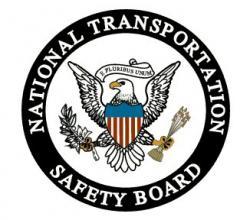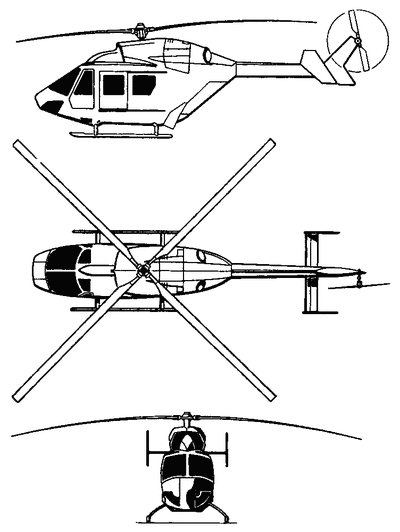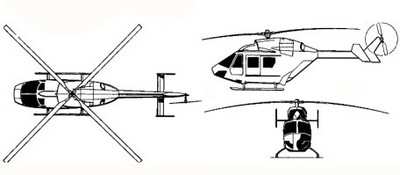"I Disengaged The Autopilot, My Right Arm Fell To My
Side..."
 As NTSB Prelims go, this one is a
little on the unusual side... and could have gone a lot worse than
circumstances permitted. However; a medical helo flight went awry
when its pilot suffered a scenario in which he suddenly lost the
use of his right arm. The Part 135 flight executed an emergency
landing at Cherry Point Marine Corps Air Station with a medical
crewmember providing control assistance under the instructions of
the stricken pilot. The helo sustained significant damage in the
run-on landing, but all three crew members emerged unscathed. It
sounds like the pilot used his head when his body failed him... and
we wish him a speedy recovery and return to flight status...
As NTSB Prelims go, this one is a
little on the unusual side... and could have gone a lot worse than
circumstances permitted. However; a medical helo flight went awry
when its pilot suffered a scenario in which he suddenly lost the
use of his right arm. The Part 135 flight executed an emergency
landing at Cherry Point Marine Corps Air Station with a medical
crewmember providing control assistance under the instructions of
the stricken pilot. The helo sustained significant damage in the
run-on landing, but all three crew members emerged unscathed. It
sounds like the pilot used his head when his body failed him... and
we wish him a speedy recovery and return to flight status...
NTSB Identification: ERA11LA106
Nonscheduled 14 CFR Part 135: Air Taxi & Commuter
Accident occurred Wednesday, December 29, 2010 in Cherry Point,
NC
Aircraft: EUROCOPTER MBB-BK, registration: N854EC
Injuries: 3 Uninjured.
This is preliminary information, subject to change, and may
contain errors. Any errors in this report will be corrected when
the final report has been completed.
On December 29, 2010, at 0223 eastern standard time, a
Eurocopter BK117-C2, N854EC, operated by Air Methods Corporation,
performed an emergency landing at Cherry Point Marine Corps Air
Station (Cunningham Field) (NKT), Cherry Point, North Carolina,
after the pilot became partially incapacitated. The helicopter
departed from Pitt County Memorial Hospital Heliport (NC91),
Greenville, North Carolina at 0135 and was enroute to Carteret
General Hospital, Morehead City, North Carolina. Night visual
meteorological conditions prevailed and a company visual flight
rules flight plan was filed. The certificated airline transport
pilot suffered a medical incapacitation and the two medical flight
crewmembers were not injured. The helicopter sustained substantial
damage. The flight was operated under the provisions of Title 14
Code of Federal Regulations Part 135.

According to an interview provided to the Federal Aviation
Administration (FAA), the pilot reported that they were "about
two-thousand feet and about three to four minutes out" from the
destination. He was flying the helicopter utilizing the autopilot
and shortly after "I disengaged the autopilot, my right arm fell to
my side." He informed his medical flight crewmembers and the Cherry
Point Air Traffic Controller and declared an emergency. He further
requested to land at NKT and the Air Traffic Controller provided
radar vectors. A medical crewmember seated in the left front seat
manipulated the collective control with the pilot's instructions
and the pilot manipulated the cyclic control with his left hand.
The pilot elected to make a run on landing and upon contact with
the runway the helicopter became airborne again, and then touched
down again.
After the accident the helicopter was transported to American
Eurocopter in Texas, were it was further inspected. According to
American Eurocopter, there was buckling of the exterior skin and
horizontal deck above the clam shell doors, buckling on the right
hand side lower section of the slant frame, 26 of the 41 tail boom
mating ring mount bolts were loose, the aft cross tube was severely
bent, the forward cross tube spread, the right-hand skid tube was
bent, and the left-hand skid tube was worn beyond limits.

According to photographs provided by an FAA inspector that
responded to accident location the helicopter came to rest on the
runway approximately 4,000 feet from the approach end of runway
14L. The helicopter's right vertical stabilizer was scraped along
the bottom edge.
 Airborne 07.11.25: New FAA Boss, New NASA Boss (Kinda), WB57s Over TX
Airborne 07.11.25: New FAA Boss, New NASA Boss (Kinda), WB57s Over TX Airborne-Flight Training 07.10.25: ATC School, Air Race Classic, Samson School
Airborne-Flight Training 07.10.25: ATC School, Air Race Classic, Samson School Airborne Affordable Flyers 07.03.25: Sonex HW, BlackShape Gabriel, PRA Fly-In 25
Airborne Affordable Flyers 07.03.25: Sonex HW, BlackShape Gabriel, PRA Fly-In 25 Airborne-Flight Training 07.10.25: ATC School, Air Race Classic, Samson School
Airborne-Flight Training 07.10.25: ATC School, Air Race Classic, Samson School Rick Kenin New Board Chair of VAI
Rick Kenin New Board Chair of VAI





